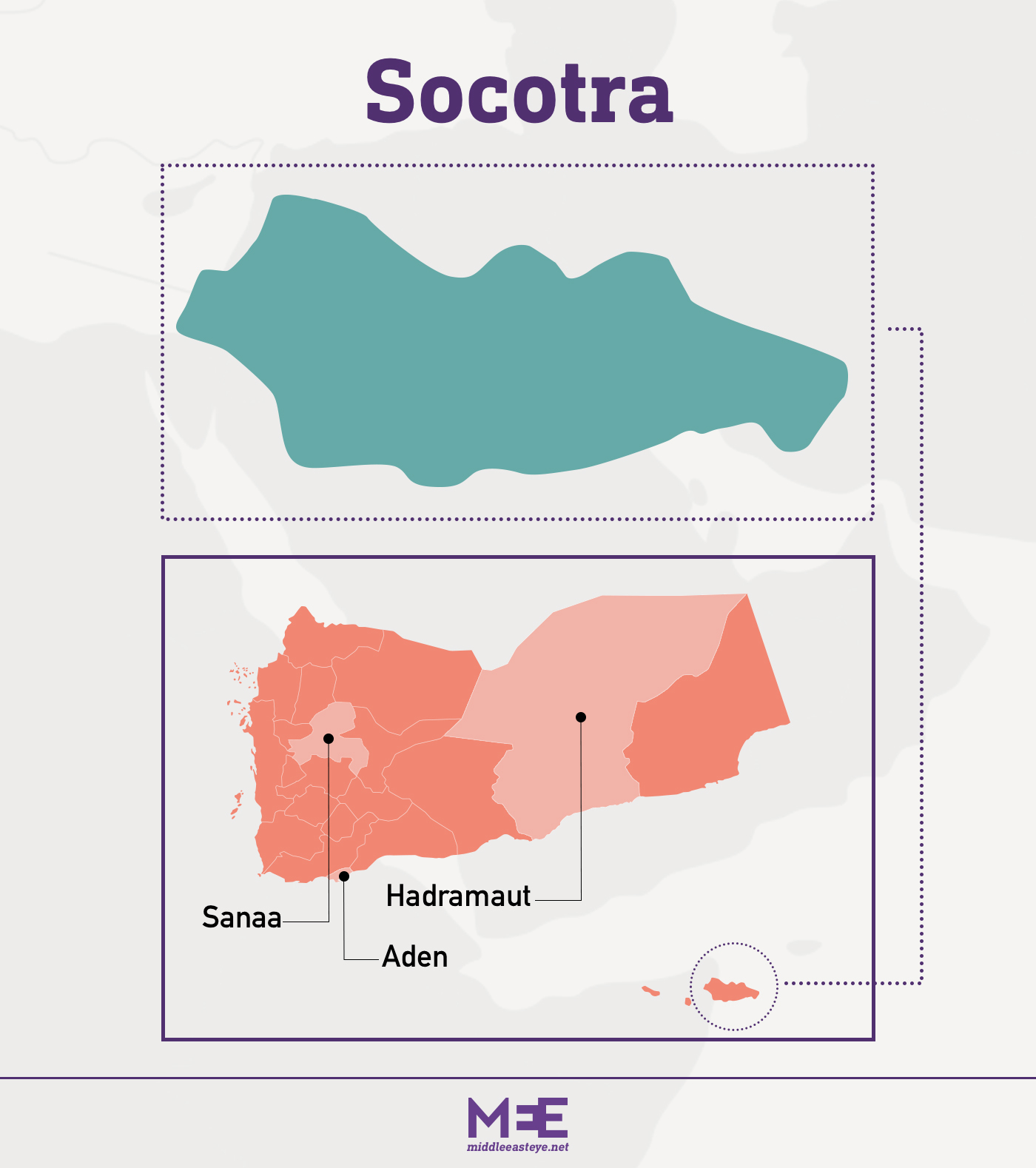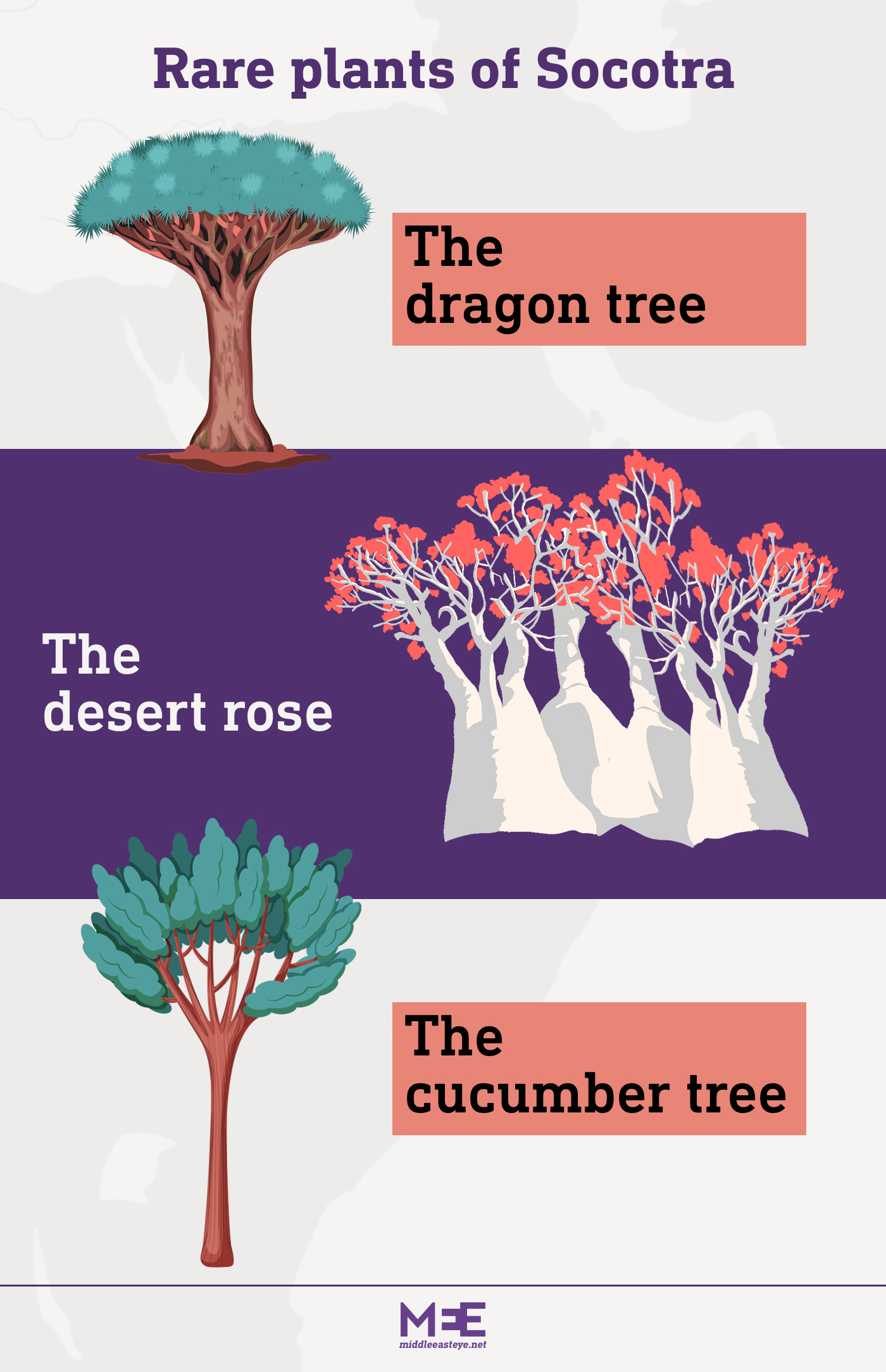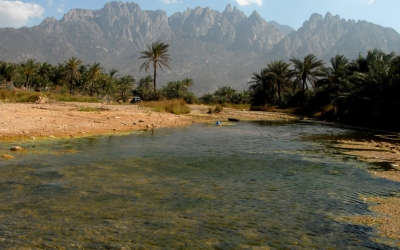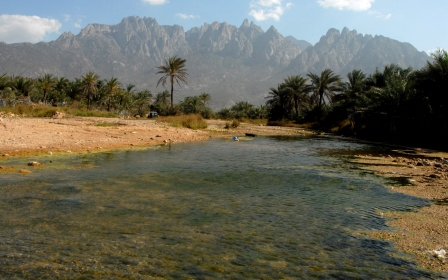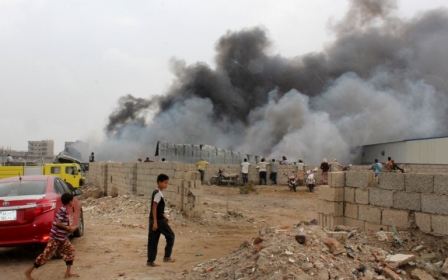Foreign tourists can finally visit Yemen's idyllic Socotra. Yemenis cannot
The Yemeni island of Socotra is a strange kind of paradise, a place where unique plants burst from its sandy shores unlike any seen elsewhere on earth.
And although the images of this alien landscape are far from foreign for mainland Yemenis, who rightfully see the island as a national treasure, access to Socotra, situated in the northwestern Indian Ocean some 400km south of Yemen's mainland, has become near impossible for anyone other than foreign tourists.
'Socotra is an unmatched place in Yemen. It's where Yemenis can go and enjoy their time for a few days, but it has become inaccessible for people with limited sources of income'
- Dhafer al-Ameen, Sanaa resident
Foreign tourism came to an abrupt halt in Yemen in 2015, when the ongoing civil war erupted, a conflict that has taken tens of thousands of lives and left the already poor country severely impoverished.
Socotra, located around 1,000km from the southern city of Aden where Yemen's government is based, soon found itself isolated. Direct flights from Sanaa, Aden and other provinces were halted. Some planes lifted off from Hadhramout, but the roads into and around the southern province have been littered with checkpoints, frontlines and even terrorist groups.
Then came the United Arab Emirates. Early in Yemen’s war, the country was battered by Cyclone Chapala, which tore through the southern provinces, including Socotra.
The UAE, which entered the conflict fighting as part of the Saudi-led coalition propping up the Yemeni government against the Houthi movement, deployed on Socotra and its surrounding islands, declaring its troops were there to help the cyclone’s victims.
Emirati forces were initially welcomed by the government and locals, who were grateful for the construction of emergency accommodation and the installation of water and healthcare infrastructure, including repairs to damaged health centres, providing patients with cheap or free treatment, and even arranging flights to medical facilities across the Gulf.
As the Emiratis increased their presence and influence on the island, Socotra has become accessible to visitors from the UAE and there have been direct flights from Dubai to Socotra.
In May last year, clashes erupted on the island between UAE-backed armed forces, affiliated with the Southern Transitional Council (STC), a powerful secessionist group, and government forces, with the separatists wresting control of Socotra’s capital Hadibo a month later.
This group of four islands, the largest one of which is also called Socotra, is home to more than 60,000 residents. It is on the main shipping routes that criss-cross the Gulf of Aden and has been occupied at various points by the Portuguese and the British, among others.
Hailed by some as the “Galapagos of the Indian Ocean”, Socotra’s biodiversity has long drawn adventurous tourists to its clear waters, rugged terrain and other-worldly vegetation and earned it a place on Unesco’s World Heritage List in 2008. The archipelago's first airstrip was only opened in 1999.
Foreigners back on the island
In the past five years, residents have become accustomed to seeing Gulf nationals on their island, however, recently, the UAE has started facilitating the entry of foreign tourists to Socotra.
'We’ve heard rumours that Israelis have been visiting the island but we don’t know anything. For us, we only know that they are foreigners and only security forces can know'
- Aqeel, Socotra resident
“Socotra has been calm since last year and we have lived in peace. We started to see people from the Gulf and foreigners come,” Aqeel, a resident of Socotra, told Middle East Eye.
“Before the war, many foreign tourists would come to the island and we used to sell them local products but that stopped after 2015. Even the few who come nowadays would rather visit nature than visit the markets in Hadibo.”
Like many islanders, Aqeel was not happy about Socotra becoming part of Yemen’s conflict, which has deprived them of their main sources of income generated by tourism.
Aqeel, however, is pleased to see foreigners coming back to the island.
“I know these tourists come through the Emirates without any coordination with the Yemeni government and that’s not good, but at least we are seeing some foreigners on the island again,” he said.
Aqeel confirmed that some Yemeni visitors from different provinces have also been visiting the Island, via both air and sea, but their numbers have also not been the same as before the war.
“Regardless of the political disputes over Socotra and the lack of coordination, foreigners have given us a glimmer of hope that the island may return to the way it was before the war,” Aqeel said, thinking of a time when Socotra felt safer with no military personnel spread around the island as they are now.
“Armed people can be seen everywhere, especially when there are foreigners on the island.”
Social media activists, from Socotra and elsewhere, have accused the UAE of sending Israelis to the island, but neither the UAE nor its supporters on the island have addressed these claims. National and international outlets have also reported that Abu Dhabi has been facilitating these trips.
“We’ve heard rumours that Israelis have been visiting the island but we don’t know anything. For us, we only know that they are foreigners and only security forces can know,” Aqeel said.
Mariam al-Socatri, a Socotran social media activist who lives in Kuwait, in May posted photos of foreigners in Socotra on her Twitter account, claiming that the UAE was facilitating the entry of Israeli military intelligence posing as tourists.
Illegal tourism
Mukhtar al-Rahabi, an adviser to the Yemeni information minister, has accused the UAE of violating Socotra and of having planned for years to impose its control over the island.
"Today it has become the primary controller in Socotra. Even the tourist delegations take permission from the UAE to enter Socotra," he said in a tweet early last month.
“The UAE sends delegations of foreign tourists to Socotra and this is a clear violation of Yemeni sovereignty.”
The Yemeni ambassador to Jordan, Ali al-Imrani, on 25 May also posted a tweet accusing the UAE of illegitimate control of the Yemeni Island.
“They [UAE] came to restore legitimacy to Sanaa but then they expelled it from Aden and supported the opponents of legitimacy, including [southern] separatists in order to control the islands of Socotra, Mayyun [an island right in the middle of Bab al-Mandeb] and others.
“They bring foreign tourists to Socotra without visas from the Yemeni government.”
A source in the Information, Tourism and Culture Ministry in Aden confirmed to MEE that while the ministry and national security must be aware of any tourists coming to Yemen, they in fact did not know anything about what was happening in Socotra.
“Socotra is out of government control and all tourists come directly from the Emirates without a Yemeni visa,” he said. “This is illegal and the Yemeni government should raise this issue to the international community as the UAE has occupied Socotra.”
'No one can say no to the Emiratis and the Yemeni government knows it cannot do anything so they keep silent against such violations'
- Tourism ministry source
The source was unhappy about the violations by the UAE and the silence of the government against what was happening in Socotra.
"No one can say no to the Emirates and the Yemeni government knows it can’t do anything so they keep silent against such violations,” he said.
There have been several clashes between President Abd Rabbuh Mansur Hadi’s internationally recognised government and the UAE-backed separatist STC in the south over the past few years.
But while the current Yemeni government, formed last year to bridge differences between the nominal allies, is divided between the STC and Hadi’s ministers, the separatists still don’t recognise the president’s legitimacy.
“Socotra belongs to the south and the Emirates is our ally and has been supporting us in different fields so we welcome them and their tourists in Socotra and across the south,” Ahmed al-Hamidi, a supporter of the STC, told MEE.
He said that only the “southern leadership”, in reference to the STC, can talk about the sovereignty of Socotra and other southern areas.
“We are calling on the Emiratis to intervene and help us safeguard the south’s sovereignty from the northern government that is looting the wealth of the south,” he said.
Inaccessible to Yemenis
Dhafer al-Ameen, a Sanaa resident, visited Socotra in 2009 and was dazzled by the island’s nature and its good-natured people, who are famously welcoming to visitors.
“Socotra is an unmatched place in Yemen. It’s where Yemenis can go and enjoy their time for a few days, but it has become inaccessible for people with limited sources of income,” he told MEE.
Socotra is famed for its unique biodiversity and rich flora and fauna, according to Unesco, which has documented that 37 per cent of its 825 plants and 90 per cent of its reptile species are unique to the island.
The island's dragon blood tree, with its distinctive umbrella-shaped canopy and red sap, is listed as a World Heritage Site.
“We used to be able to fly from Sanaa to Socotra, but now we need to drive to Hadhramout, through dangerous roads, which can take three days,” Ameen said.
He saw the photos of foreign tourists in Socotra and was unhappy to see them on the island while Yemenis cannot easily travel there.
“In addition to that, we face discrimination and are subjected to swear words from southern soldiers at checkpoints and in the streets, so it is dangerous for us to travel,” he said.
“I hope the situation returns to the way it was before the war and we can visit Socotra again.”
This article is available in French on Middle East Eye French edition.
Middle East Eye propose une couverture et une analyse indépendantes et incomparables du Moyen-Orient, de l’Afrique du Nord et d’autres régions du monde. Pour en savoir plus sur la reprise de ce contenu et les frais qui s’appliquent, veuillez remplir ce formulaire [en anglais]. Pour en savoir plus sur MEE, cliquez ici [en anglais].



